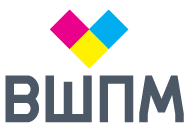13.04.2022YOUTH SCIENCE INNOVATIONS
A student conference took place on the basis of Zoom on April 7, which was organized by St Petersburg State University of Industrial Technologies and Design Higher School of Printing and Media Technologies. Its remote format has both pros and cons.
The obvious advantage is the availability of the conference: you could take part right from home. Also, the obvious disadvantage of the format is the technical failures that some of the participants faced. Some audience members noted poor sound quality, up to its absence for several seconds. Also, despite the availability of the conference, organisational problems arose, which, fortunately, were quickly eliminated.
Speaking about the content of the conference, it included three reports in English from the students of group 2-TID-2: Dlovga Angelina, Malkova Alexandra and Trefilova Tatiana. The topics of their reports were devoted to the topic of design in computer games, as well as its impact on this and related areas, such as the creation of concept art and social interaction.
It is worth noting the high quality of the language and vocabulary of each of the speakers. The visual component of each of the reports was also at a high level. But the delivery of the speakers; content was significantly different.
The first speaker, Dlovga Angelina, made a paper on the topic ‘Video games possibilities for social interaction process’. In it, she talked about how video games affect human behavior, about the existence of “toxic”; communities, and also gave a classification of existing games. But in the end, she could not answer some of the questions from the audience, which gave the impression that the speaker were poorly versed in this area.
The second speaker, Malkova Alexandra, made a paper on the topic ‘Video games as a form of art’. She presented her work with dignity, answered questions from the audience, but it was noticeable from her voice that the speaker was very worried. Technical disturbances with sound, which were mentioned earlier, also played a negative role in the impression of the report.
The last speaker, Trefilova Tatiana, presented a paper on the topic ‘3D technologies in concept art’. In her work, the speaker presented the areas of application of concept art, differences in the technology of creating 2D and 3D art, and also showed programs with which you can create 3D art. Her presentation was bolder, she confidently answered questions from the audience, actively gave examples used by her in the presentation.
Considering all of the above, as well as my own impressions of each report, I can say that the last report from Trefilova Tatiana seemed to me the most fascinating and informative. I learned new information about the process of creating 3D concept art, as well as about the advantages and disadvantages of some programs. Speaking about the conference in general, I have only positive impressions, despite all the difficulties that have arose.
Anastasia Sy'romyatnikova, 2-GID-11
